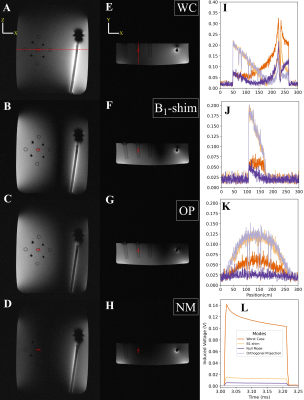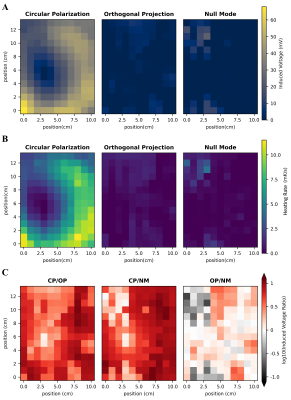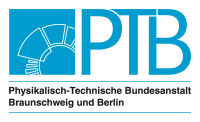Berk Silemek1, Frank Seifert1, Bernd Ittermann1, and Lukas Winter1
1Physikalisch-Technische Bundesanstalt (PTB) Braunschweig and Berlin, Berlin, Germany
1Physikalisch-Technische Bundesanstalt (PTB) Braunschweig and Berlin, Berlin, Germany
The sensor Q Matrix ( $$$Q_S$$$)
is introduced that allows safe MRI of implants without compromising image
quality. This safety concept is based on small and low-cost embedded sensors
and pTx. It is real-time capable and does not require a priori simulations or
safety testing.

Figure-5:MRI experiments at 3T using the diode and $$$Q_S^E$$$ for pTx mitigation and imaging. The target location for the B1-shim is marked with a red cross. A-D) Coronal and E-H) axial GRE images for the four different pTx modes WC, CP, OP, and NM. Signal intensity profiles along I) x-axis, J) y-axis and K) z-axis for each excitation mode. L) shows induced diode signals on the implant for these modes. OP and NM show substantially reduced tip signal compared to the B1-shim (and dramatic reduction compared to WC).

Figure-3: Results for the diode sensor in the mapped area in the testbed. The implant is immersed 120 mm into the phantom. (A) The diode readings for CP, OP and NM. OP and NM are derived from eigenvalues of the acquired $$$Q_S^E$$$. In (B), the heating rates measured by the thermistor are mapped, when the same CP, OP and NM are applied for 2 s per implant position. (C) Diode-signal (i.e. E-field) ratios (logarithmic scale) for each mode, indicating improved or reduced patient hazard. Compared to CP, both OP and NM reduce the E-field nearly everywhere (99%) and by a factor ≥2 in 93% of the positions.
